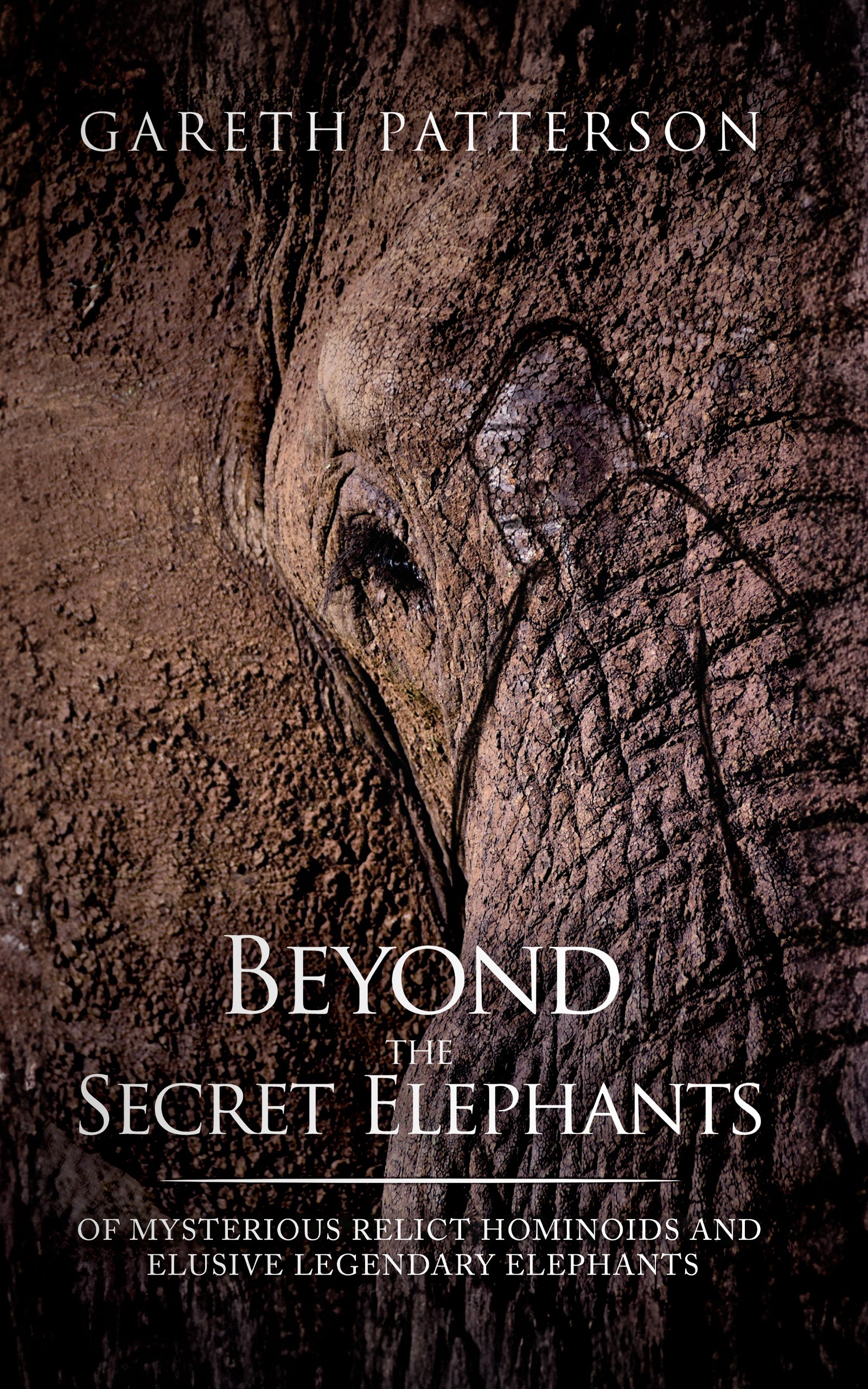Decoding The Great Pyramid's Secrets

By Elaine Westfield, Ufologist
The Great Pyramid of Giza stands as humanity's most enduring architectural achievement-a 481-foot-tall monument composed of 2.3 million stone blocks, each weighing between 2.5 and 15 tons. For centuries, we've accepted the conventional narrative that this colossal structure was simply a tomb, a final resting place for Pharaoh Khufu. But this explanation grows increasingly inadequate as modern research reveals the pyramid's extraordinary complexity.
Consider the precision: the base is level to within 2 inches across its 755-foot sides, the entire structure is aligned to true north with an accuracy of 3/60th of a degree, and some interior granite blocks fit together so perfectly that not even a credit card can slide between them. All of this was achieved without modern tools, computers, or even the wheel.
Something doesn't add up. If this was merely a tomb, why the extraordinary precision? Why the complex system of shafts, chambers, and corridors? And perhaps most tellingly-why has no pharaoh's body ever been discovered inside?
"The Great Pyramid is absolutely elegant and marvelous even by standards today," notes one researcher quoted in our materials. What if this structure wasn't just a static monument but a sophisticated machine, deliberately calibrated to interact with natural forces in ways we're only beginning to understand?
The Earth's Heartbeat and a Stone Resonator
At the heart of alternative theories about the Great Pyramid lies a natural phenomenon called the Schumann Resonance-essentially the Earth's electromagnetic "heartbeat" pulsing at approximately 7.83 Hz. This frequency, discovered by physicist Winfried Otto Schumann in the 1950s, happens to fall within the alpha brainwave range associated with relaxation, meditation, and heightened awareness in humans.
Could the ancient Egyptians have known about this fundamental Earth frequency? And more remarkably, could they have designed the Great Pyramid to resonate with it?
The King's Chamber provides our first clue. Unlike most of the pyramid, which is limestone, this chamber is constructed entirely of massive granite blocks. This material choice seems puzzling until you understand the unique properties of granite: it contains high concentrations of quartz crystal, which exhibits piezoelectricity-the ability to generate an electrical charge when subjected to mechanical stress.
The positioning of this granite chamber deep within the pyramid's core places it under immense pressure-literally millions of tons of stone pressing down. This pressure would theoretically activate the granite's piezoelectric properties, creating a continuous electrical charge.
Above the King's Chamber sits one of the pyramid's most mysterious features: the "Zed"-five massive granite slabs stacked with small air spaces between them. Conventional Egyptology dismisses these as mere "relieving chambers" to distribute weight, but their design suggests something far more sophisticated.
The Zed's granite slabs have a peculiar characteristic: they're perfectly smooth on their bottom faces but rough and unfinished on top. This makes little sense structurally but works brilliantly as an acoustic filter. The rough upper surfaces would scatter high-frequency waves, while the smooth lower surfaces would allow low-frequency waves-like the 7.83 Hz Schumann Resonance-to pass through cleanly. In essence, the Zed might have functioned as an ancient low-pass filter, tuning the pyramid to Earth's fundamental frequency.
Connected to the King's Chamber is the Grand Gallery-a soaring 153-foot corridor with corbelled walls that narrow toward the ceiling. Its design appears unnecessarily complex for a simple passage, but when viewed as an energy technology, it takes on new meaning. The corbelled walls, rising in seven overlapping layers, create a structure remarkably similar to a modern waveguide-a device that directs electromagnetic waves along a specific path with minimal loss.
The Grand Gallery's acoustics support this theory. Sound produced here creates lasting echoes that seem to amplify rather than diminish. If sound waves behave this way in this space, electromagnetic waves might follow similar patterns, gaining strength as they travel through this precisely designed corridor.
Italian researchers have even proposed a "hydraulic hypothesis" suggesting water from the Nile may have been channeled through parts of the pyramid, including the Grand Gallery. Water, an excellent dielectric medium, would enhance electromagnetic wave propagation. If true, this would create an ideal environment for transmitting and amplifying energy through the pyramid's internal architecture.
Think of the pyramid's internal structure as similar to a modern electronic circuit: the King's Chamber generating energy through piezoelectricity, the Zed filtering it to isolate the desired frequency, and the Grand Gallery channeling and amplifying it. This isn't primitive technology-it's sophisticated engineering with a purpose.
Obelisks, the Ankh, and a Lost Energy Network
If the Great Pyramid was designed as an energy transmitter, it would need receivers to complete the system. This is where Egyptian obelisks enter the picture.
These tall, slender monuments of granite, capped with gold or electrum (a natural gold-silver alloy), stood at sacred sites throughout Egypt. Like the King's Chamber, they were made of granite with its piezoelectric properties, while their conductive metal caps would serve as excellent antennas. Their placement near water sources-either the Nile or temple lakes-would further enhance their receptive capabilities.
The subtle eight-sided design of the Great Pyramid, visible only under certain lighting conditions, might have played a role in directing this energy. Each slightly concave face could focus emissions toward specific targets, much like modern directional antennas. This would allow for precise targeting of different obelisks across the Egyptian landscape.
"The obelisks' placement at strategic locations throughout Egypt suggests a deliberate design for distributing energy across the land," notes one of our source materials. This mirrors modern telecommunications networks, where strategically placed towers create coverage across a wide area.
The Ankh, Egypt's iconic symbol of life, might hold another key to this system. Its distinctive shape-a loop atop a cross-resembles a circuit diagram: the loop representing the energy source (the pyramid) and the cross representing the conduit or receiver (the obelisk).
Ancient Egyptian art frequently depicts deities offering the Ankh to the lips of mortals. Traditionally interpreted as bestowing life, this gesture might represent something more functional: activating or "tuning" individuals to the energy network. The golden hue of the Ankh in many depictions suggests it was made of conductive materials, consistent with an electrical function.
As one researcher theorizes: "The Ankh may have been used in rituals to synchronize the obelisks with the Great Pyramid's energy output. Priests might have struck it with a sistrum (a rattling instrument sacred to the goddess Hathor) to produce specific frequencies." This transforms the Ankh from a purely symbolic object to a functional tool-a tuning device for an ancient technological system.
Nikola Tesla's Echo: A Modern Lens on Ancient Technology
The parallels between these theories and the work of Nikola Tesla are remarkable. Tesla, the visionary inventor who pioneered alternating current electricity, was fascinated by the idea of harnessing Earth's natural energy and transmitting it wirelessly-exactly what the Great Pyramid might have been designed to do.
Tesla's Wardenclyffe Tower, designed in the early 1900s, was intended to transmit power globally without wires by using Earth as a conductor. This concept bears a striking resemblance to the theoretical function of the Great Pyramid and its associated network of obelisks. Both systems are based on principles of resonance, both utilize Earth as a conductor, and both aim to transmit energy wirelessly over long distances.
"Tesla's belief in the Earth as a giant capacitor, storing and releasing energy, finds an ancient echo in the pyramid's grounding via the subterranean chamber," notes one of our sources. Tesla was known to have studied ancient civilizations and was reportedly fascinated by the Great Pyramid, recognizing the mathematical precision in its design-particularly how its dimensions relate to natural constants like pi.
While Tesla's dream of wireless energy was never fully realized due to financial constraints, his vision lives on in modern wireless charging technologies. Perhaps the ancient Egyptians achieved something similar thousands of years earlier, using principles that modern science is only now rediscovering.
Unseen Spaces: Decoding the Voids Within
Modern technology is allowing us to explore the Great Pyramid in ways previously impossible. The ScanPyramids project, launched in 2015, uses non-invasive techniques like muon tomography (a form of cosmic-ray imaging) to peer inside the structure without disturbing it.
In 2017, this project made a groundbreaking discovery: a massive void above the Grand Gallery, approximately 100 feet long. This previously unknown space has sparked intense debate. Some suggest it's simply another weight-relieving feature, while others propose it might be a hidden chamber potentially containing artifacts or information about the pyramid's true purpose.
More recently, in 2023, researchers identified another void near the north face of the pyramid, dubbed the North Face Corridor. This smaller space appears to be accessible through what might be a plugged access hole, suggesting it was deliberately sealed after serving its purpose. One researcher speculates this could have been "a test chamber for the architectural techniques used throughout the pyramid, particularly the vaulted ceiling design."
The ScanPyramids team continues its work with increasingly sophisticated equipment, including muon detectors 100 times more powerful than those used in their initial discoveries. This technology promises to create detailed 3D images of the pyramid's interior, potentially revealing smaller artifacts or features that current methods cannot detect.
These hidden voids suggest that the internal design of the Great Pyramid may be far more complex than previously thought. Whether they served structural, symbolic, or functional purposes remains to be determined, but their discovery reinforces the sense that this ancient monument still has secrets to reveal.
The Builders' Secrets: Challenging the Slave Narrative
One of the most persistent myths about the pyramids is that they were built by slaves. This narrative, popularized by Hollywood and based on misinterpretations of ancient texts, has been thoroughly debunked by modern archaeological evidence.
Excavations near Giza have uncovered a workers' city-complete with barracks, bakeries, breweries, and storage facilities. Analysis of food remains shows that the workers enjoyed a diet rich in protein, including beef, fish, and beer-hardly the rations that would be provided to slaves.
"They're getting a lot of food, but they're requiring-their bodies are requiring a lot of protein. They're working very hard. They're moving rocks," explains archaeologist Richard Reading. "We estimate they were getting almost 300 grams a day of meat, which is about a Big Mac or a quarter pounder with cheese."
Examination of worker skeletons reveals evidence of medical care, including successfully treated broken bones and even signs of brain surgery. These findings suggest a workforce that was valued and well-treated, not disposable slave labor.
Most experts now believe that the pyramids were built primarily by seasonal laborers-farmers who were unemployed during the annual Nile flood, which rendered agricultural work impossible for three to four months each year. During this period, these workers would be housed, fed, and paid to work on the pyramid, returning to their farms when the floodwaters receded.
The discovery of the Wadi El Jarf papyri-the oldest papyrus texts ever found-provides a fascinating glimpse into the logistics of pyramid construction. These documents, dating to the 27th year of Khufu's reign, contain the journal of an official named Merer, who led a team of 40 workers responsible for transporting limestone from the quarries to the construction site.
Merer's journal details the journey along the Nile, mentioning artificial harbors and basins that allowed boats to approach the pyramid site. Archaeological evidence has confirmed the existence of these water features, now buried beneath modern Cairo.
"The papyri refer to the Great Pyramid by its ancient name: 'Akhet Khufu,' meaning 'the Horizon of Khufu,'" our sources note. This gives us direct insight into how the ancient Egyptians themselves viewed this monument-not just as a tomb but as a horizon, a meeting point between earth and sky.
Far from being the product of slave labor, the Great Pyramid represents a national project that may have fostered unity and purpose. As one researcher puts it: "Like the space program, there was a sense of national pride and achievement." The pyramid wasn't just a monument to a dead king but a testament to what a unified civilization could accomplish.
Construction Secrets: Unlocking the How-To
The precision of the Great Pyramid's construction continues to amaze modern engineers. The base is level to within just 2.1 centimeters, despite covering 13.1 acres. Its alignment to true north deviates by only 3/60th of a degree. Such accuracy with ancient tools seems almost impossible, yet the evidence stands in stone.
For establishing the cardinal directions, researchers suggest they might have used a brilliant method involving the equinoxes. Engineer Glenn Dash explains: "You simply take a stick and you stick it in the ground... just do the test on either the spring or fall equinox." By marking the tip of the shadow as it moved throughout the day, they could establish an accurate east-west line. "If you do that, you get the kind of accuracy that the Egyptians achieved... 1/10th of one degree."
For leveling the foundation, they likely used water-filled trenches that functioned like giant spirit levels. Engineer Dennis Stocks describes: "The ancient Egyptians used a channel... they would put water in and it would act as a kind of spirit level. All he has to do is follow the line of the water along it, and then he can be sure that the pyramid base will be truly level."
The cutting and shaping of stones presented another challenge, especially given that the ancient Egyptians had not yet discovered iron. For limestone, which makes up most of the pyramid, copper chisels proved sufficient. Interestingly, Egyptian copper contained traces of arsenic-an accidental alloying that made their tools harder and more durable than pure copper.
For the harder granite used in critical areas, they employed an ingenious technique: toothless copper saws used with quartz sand. Stocks explains: "This material here is very hard granite, and to cut this you need a special tool... a copper saw, but it's toothless... What's going to do the cutting? Well, it's sand. The quartz crystals within the sand embed themselves into the softer copper, and because the saw's dragging those crystals backward and forward within the slot, that actually does the cutting."
This method works, but it's painfully slow-cutting at a rate of just 2 cubic inches per hour. The granite sarcophagus in the King's Chamber would have taken about four months of continuous work to complete.
The greatest construction mystery remains how the massive blocks were raised to the pyramid's higher levels. Most Egyptologists believe some form of ramp was used, but the exact design is debated. Did they approach straight on, zigzag up one side, or spiral around it? Some even propose that internal ramps were built within the pyramid as construction progressed.
What's clear is that the ancient Egyptians were master problem-solvers who developed innovative techniques for the challenges they faced. The Great Pyramid wasn't just a massive monument but a tremendous feat of engineering that pushed the boundaries of what was possible with the technology of the time.
Celestial Alignments and the Journey to the Stars
Beyond its potential as an energy device, the Great Pyramid embodies profound spiritual significance through its precise alignment with celestial bodies. This astronomical precision wasn't merely for show-it was integral to the pyramid's function as a gateway to the afterlife.
The pyramid's four sides are aligned almost perfectly with the cardinal directions, with the north face oriented to within 3/60th of a degree of true north. At the time of construction, this would have aligned with Thuban, the pole star in the constellation Draco around 2500 BCE.
Robert Bauval's controversial Orion Correlation Theory suggests that the arrangement of the three main Giza pyramids mirrors the pattern of the three stars in Orion's Belt. This constellation was associated with Osiris, the god of death and resurrection, making it a fitting celestial counterpart for structures dedicated to the pharaoh's journey to the afterlife.
The narrow shafts that extend from the King's and Queen's Chambers add another layer to this astronomical alignment. The southern shaft from the King's Chamber points toward Alnitak (the easternmost star in Orion's Belt), while the northern shaft aligns with Thuban. From the Queen's Chamber, the southern shaft points toward Sirius (associated with the goddess Isis), while the northern shaft points to circumpolar stars.
"The afterlife of the Pharaoh was modeled on the afterlife of the Sun," explains one Egyptologist. "It was the similarity between the life cycle and resurrection of the sun and the life cycle and resurrection of the king that leads us to believe the pyramid was primarily a solar monument."
These alignments suggest that the shafts were designed as pathways for the pharaoh's soul to travel to the stars. In Egyptian religion, the pharaoh would join with the sun god Ra in his daily journey and become one with Osiris, while his queen would join with Isis, represented by Sirius.
The pyramid thus becomes more than a tomb or energy device-it's a transformation machine, designed to convert the deceased pharaoh into a cosmic entity, ensuring his eternal rebirth among the stars. The precision of its celestial alignments wasn't just a demonstration of astronomical knowledge but an essential component of its spiritual function.
The Mysteries That Remain: Continuing Exploration
Despite centuries of study, the Great Pyramid continues to guard many secrets. Perhaps the most tantalizing mysteries involve the unexplored spaces and sealed passages within the structure.
In 1993, a German robotics team discovered a small door with copper handles in the southern shaft of the Queen's Chamber. Nine years later, another robot drilled through this door, only to find a second sealed door behind it. What lies beyond this second door remains unknown-could it be a hidden chamber, perhaps even the true burial place of Khufu?
Egyptian archaeologist Zahi Hawass believes this might be the case: "I still believe that the burial chamber of Khufu is still hidden inside the pyramid." Given that no mummy or significant burial goods have ever been found in the commonly identified King's Chamber, this possibility cannot be dismissed.
The recently discovered void above the Grand Gallery and the North Face Corridor add to these mysteries. Christian Grosse from the Technical University of Munich, a leading member of the ScanPyramids project, notes: "We at ScanPyramids are a team mostly of scientists and engineers. Our job is first to find things, to provide a tool for archaeologists and Egyptologists to make such discoveries."
As technology evolves, so too does our understanding of the Great Pyramid. Each new discovery challenges existing theories and opens new avenues for research, ensuring that this ancient monument will continue to fascinate and puzzle us for generations to come.
The Great Pyramid represents far more than a massive stone monument-it embodies the pinnacle of ancient Egyptian knowledge, skill, and spiritual belief. Whether viewed as a tomb, an energy device, or a gateway to the stars, it stands as a testament to human ingenuity and our eternal quest to understand our place in the cosmos.
The theories we've explored-from the pyramid as a resonator of Earth's natural energy to its function as part of a wireless network connected by obelisks and tuned by the Ankh-challenge conventional understanding of ancient capabilities. They suggest a level of technological sophistication that defies the traditional narrative of linear human progress.
Recent discoveries using cutting-edge technology continue to reveal new aspects of this ancient wonder, while archaeological evidence sheds light on the skilled workforce that created it. Each finding adds another piece to a puzzle that spans millennia, connecting the wisdom of the past with the scientific inquiry of the present.
As we continue to decode the secrets of the Great Pyramid, we're not just learning about an ancient structure but gaining insight into the people who built it-their knowledge, their beliefs, and their remarkable ability to transform stone into a monument that has endured for more than 4,500 years.
The ultimate legacy of the Great Pyramid lies not just in its physical presence but in its power to inspire wonder and curiosity across time. It challenges us to question our assumptions about ancient capabilities and to recognize that knowledge can be lost as well as gained throughout human history. In this sense, the pyramid does more than commemorate a long-dead pharaoh-it serves as a bridge between past and present, inviting us to decipher its secrets and perhaps recover some of the wisdom that its builders encoded in stone.
From Bigfoot to UFOs: Hangar 1 Publishing Has You Covered!
Explore Untold Stories: Venture into the world of UFOs, cryptids, Bigfoot, and beyond. Every story is a journey into the extraordinary.
Immersive Book Technology: Experience real videos, sights, and sounds within our books. Its not just reading; its an adventure.


























